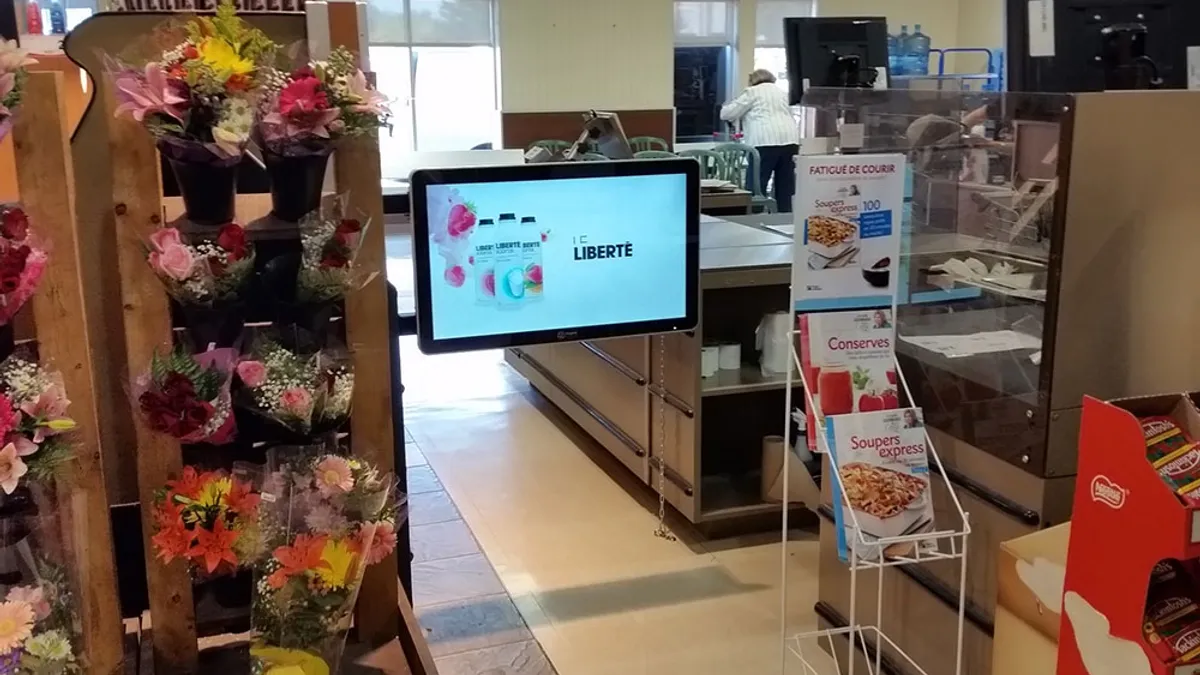Dive Brief:
- Customers are drawn to in-store signage at the checkout aisle, according to the findings of a recent study from research consultancy Millward Brown and digital POS provider Impax Media, as reported by VentureBeat.
- 69% of consumers surveyed said that long checkout lines were the most frustrating part of shopping and watching content on digital displays helped the time pass more quickly for 84% of consumers.
- The survey also found that 40% of customers say they would be more likely shop at a grocery store with digital signage near the checkout line, with advertisements displaying sales (76%), the weather (75%), and upcoming in-store events (69%) the most popular among customers.
Dive Insight:
While customers have flocked to ad-blocking software that help them avoid advertising online, relevant content and advertising can still attract eyeballs—and even loyalty—in stores.
Long checkout lines are an especially contentious area for customers, who ranked the problem above too-high pricing (66%) and items being out of stock (65%) in terms of making them "extremely or somewhat frustrated" while shopping in stores. If digital signage can help decrease friction at the checkout line with relevant information and advertising, a customer will be more likely to leave the store with a positive feeling—and ultimately come back again. Increasing customer loyalty is especially important at a time when Amazon and a range of online retailers seek to attract customers with fast shipping, easy user experiences, and the promise to avoid any type of checkout line altogether.
The study didn't touch on the effectiveness of in-store digital signage in other places outside the checkout line, but it's not hard to imagine that screens could have an impact throughout stores. Stores with screens displaying discounts or the local weather may be more helpful and less intrusive than in-app pop ups on customers' phones, which are being deployed by many retailers through beacons and other geo-locating technology. And as VentureBeat points out, these screens can be revenue drivers for the stores themselves: Five 60 second spots on these displays can go for $5,100 per month per store.













